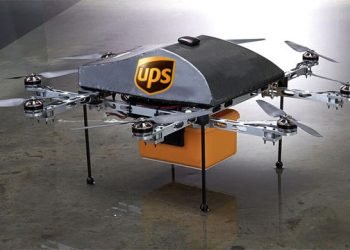By Eva Richardson | The Logistic News
April 8, 2025
Urban logistics is entering a golden age, driven by a confluence of rapid e-commerce growth, sustainability imperatives, and the increasing need for efficient last-mile delivery in crowded cities. According to recent industry research, the global urban logistics market is expected to surge from $25.7 billion in 2023 to $77.9 billion by 2033, achieving a compound annual growth rate (CAGR) of 12%.
This exponential rise marks a pivotal shift in how goods are moved and managed within urban environments, making urban logistics one of the most innovative and dynamic sectors in the global supply chain ecosystem.
E-Commerce and the 15-Minute Economy
As urban consumers increasingly demand same-day or even same-hour deliveries, urban logistics providers are rethinking traditional models. The concept of the “15-minute economy”—where consumers expect goods and services within a 15-minute radius—is placing unprecedented demands on retailers, couriers, and logistics operators.
“Urban delivery isn’t just about speed anymore; it’s about precision, sustainability, and real-time visibility,” said a senior logistics analyst at a European think tank. “Companies that can synchronize all three are emerging as the real leaders.”
Technology and Electrification Driving Efficiency
Electric logistics vehicles, real-time tracking, route optimization, and automated sorting systems are being rapidly deployed to meet city-specific challenges such as congestion, emissions regulations, and narrow delivery windows. These advancements are not only cutting operational costs but also helping meet tightening urban environmental standards.
The electric logistics vehicle segment is forecast to grow significantly in this decade, bolstered by expanding charging infrastructure and government support across major markets.
Express Logistics on the Rise
With consumers expecting faster service than ever, the express logistics segment is gaining momentum. Urban centers are witnessing a surge in small-format distribution hubs, micro-warehousing, and dedicated quick-commerce networks that serve hyperlocal communities.
Express delivery models are particularly critical for sectors like food and beverage, pharmaceuticals, and electronics, where time-sensitive logistics can determine customer loyalty.
Regional Momentum: North America Leads the Way
North America is set to remain the dominant player in the urban logistics landscape, thanks to its mature e-commerce infrastructure, investment in smart city logistics, and widespread adoption of autonomous and electric delivery fleets.
However, Asia-Pacific and Europe are not far behind, with cities like Singapore, Amsterdam, and Seoul investing heavily in multimodal delivery solutions and AI-based urban traffic management.
Key Players Reshaping Urban Delivery
Global giants such as Amazon, Alibaba, DHL, FedEx, JD.com, UPS, and Maersk are doubling down on urban logistics innovation. These companies are leveraging their scale and capital to invest in last-mile automation, drone delivery pilots, AI-powered fulfillment, and sustainable fleet upgrades.
Meanwhile, disruptors like Uber Freight and SF Express are focusing on agile, app-based models to penetrate niche city logistics markets.
The Sustainability Imperative
Cities around the world are tightening emissions rules and redefining zoning for logistics. As a result, green logistics has become a non-negotiable standard. Companies are racing to decarbonize fleets, minimize packaging waste, and use data-driven tools to optimize energy consumption across urban routes.
“Urban logistics is no longer just a delivery mechanism—it’s an environmental, social, and economic necessity,” said a sustainability officer at a global courier firm.
Conclusion: Designing the Future of Urban Mobility
With its triple-digit growth projection and strong alignment with digital, environmental, and retail trends, urban logistics is poised to be the heartbeat of modern city commerce. The companies that invest today in smarter infrastructure and cleaner technologies will be the ones that define the cityscapes of tomorrow.
For more insights on the evolution of logistics in urban environments, follow Eva Richardson and The Logistic News on LinkedIn and Google News.























